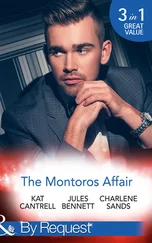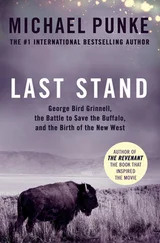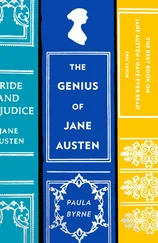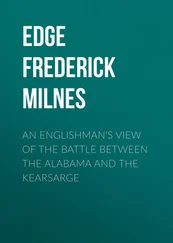In leaving behind her home, her assets, her circle of neighbors and family, and her ties to what was once a more coherent Syrian nation, Najah was also losing something extremely powerful that the rest of us take for granted: a societal system of trust, identity, and record-keeping that ties our past to our present, anchors us as human beings, and lets us participate in society. The amalgamation of information that goes into proving that we can be trusted as a member of society has historically depended upon institutions that record and affirm our life events and credentials—bank accounts, birth certificates, changes of address, educational records, driver’s licenses, etc.—and keep track of our financial transactions. To lose all of that, as refugees often do when thrust into “statelessness,” is to be put in a highly vulnerable position, one that’s inherently easy for the worst of the world’s criminals and terrorist organizations to exploit. If you are unable to prove who you are, you are at the mercy of strangers. Among all the work that agencies such as the UNHCR and the WFP do, this core function—the creation of stand-in societal institutions—is just as important as the food they provide. In dusty tent cities filled with dislocated people around the world, these humanitarian agencies must undertake the challenging task of recreating systems of social trust. They are reconstructing societies, building them all over again. And it turns out that blockchain technology provides a tool for doing just that.
It’s in this realm, where human beings must depend on reliable institutions to keep track of their social interactions and provide proof that their claims are valid, that blockchain technology comes into its own. With this system we would no longer have to trust institutions to maintain transaction records and vouch for us, since blockchain-based programs comprise an intricate set of features that result in something that’s never existed before: a transaction record that is visible to all and can be verified at any moment, but that is not controlled by any one central authority. This means two things: nobody can alter the data to suit their own ends, and everybody has greater control over their own data. You can see how this could be an empowering idea for millions of Syrians living a scorched-earth existence.
Just as the blockchain-distributed ledger is used to assure bitcoin users that others aren’t “double-spending” their currency holdings—in other words, to prevent what would otherwise be rampant digital counterfeiting—the Azraq blockchain pilot ensures that people aren’t double-spending their food entitlements. That’s a pretty important requirement in refugee camps, where supplies are limited and where organized crime outfits have been known to steal and hoard food for profit. And it means that refugees like Najah will always be able to prove that their accounts are legitimate. That would end the periodic and disturbing disruption to provisions that many have experienced under the cash-voucher system. In that system, any inconsistency tends to flag a concern to administrators, who often feel compelled to cut off the person’s access to food until it is resolved.
Under this new pilot, all that’s needed to institute a payment with a food merchant is a scan of a refugee’s iris. In effect, the eye becomes a kind of digital wallet, obviating the need for cash, vouchers, debit cards, or smartphones, which reduces the danger of theft. (You may have some privacy concerns related to that iris scan—we’ll get to that below.) For the WFP, making these transfers digital results in millions of dollars in saved fees as they cut out middlemen such as money transmitters and the bankers that formerly processed the overall payments system.
So whenever a refugee spends some level of his or her digital “cash” to buy flour, that transaction automatically registers on a transparent ledger that can’t be tampered with. That ever-present, ever-updating, extremely reliable record-keeping model means WFP administrators can have full visibility of the flow of transactions at any time, even though the WFP has no centralized record of its own. The organization can support a camp-wide payment system without having to take on the centralized role of a bank or payment processor.
By contrast, the UNHCR’s identity program, which is integrated into the WFP’s blockchain solution, is maintained as a centralized database. That has raised some concerns among critics. Such systems are susceptible to hacking because, by accumulating large amounts of data in one big “honeypot,” they offer what’s known as a single attack vector. In this case, such risks could in theory put this particularly vulnerable group of human beings at risk—it’s not hard to imagine the worst if a database of biometric identifiers ever fell into the hands of an ethnic cleansing–minded institution like ISIS. People in the blockchain space, who are often fierce advocates of privacy, are among the most vocal about these concerns, and some are trying to figure out how to use the same technology to decentralize control over self-identifying information so that people aren’t vulnerable to break-ins of these big data honeypots. But until such “self-sovereign” solutions are available, the WFP and the UNHCR have made a determination that the risks are for now outweighed by the benefits of a seamless, cashless system.
According to WFP spokesman Alex Sloan, the pilot has already shown success: it has saved money and created a much more efficient way of dealing with inconsistencies in refugees’ accounts. It’s so successful, in fact, that the agency is looking to extend the service to a larger population of 100,000 refugees. In the not too distant future, Sloan says, 20 million food program beneficiaries who receive disbursements in cash could be eligible for the blockchain program. With the world facing the biggest refugee crisis in history, a result of greed, of the brutal pursuit of self-serving power, and of failed Western policies to contain it, we owe it to these people to bring some security back into their lives—to provide them with a platform of trust upon which to rebuild. Perhaps blockchain technology offers the best chance of delivering that.
The World Food Program’s Azraq experiment is just one example of how international agencies are exploring blockchain solutions to the problems of the world’s neediest. In early 2017, a group of blockchain enthusiasts at the UN’s New York headquarters launched a Web site calling on other UN employees to work with them. The group rapidly grew to eighty-five UN staffers worldwide, and they are now working on multiple pilots addressing blockchain for development, in partnership with governments such as Norway’s. At the World Bank, a new blockchain lab was created with fresh funding in June 2017 to explore how the technology could tackle poverty alleviation through incorruptible property registries and secure digital identities. The Inter-American Development, in concert with MIT Media Lab’s Digital Currency Initiative, is looking at how poor Latin American farmers might be able to obtain credit on the basis of reliable, blockchain-proven records from commodity warehouses. Non-profit international organizations such as the World Economic Forum and the Rockefeller Foundation are also diving into this area.
What do these decades-old international organizations see in an arcane digital technology built by the crypto-libertarians and Cypherpunks who gave us Bitcoin? It’s the prospect that this decentralized computing system could resolve the issue of social capital deficits that we discussed in the context of the Azraq refugee camp. By creating a common record of a community’s transactions and activities that no single person or intermediating institution has the power to change, the UN’s blockchain provides a foundation for people to trust that they can securely interact and exchange value with each other. It’s a new, more powerful solution to the age-old problem of human mistrust, which means it could help societies build social capital. That’s an especially appealing idea for many underdeveloped countries as it would enable their economies to function more like those of developed countries—low-income homeowners could get mortgages, for example; street vendors could get insurance. It could give billions of people their first opening into the economic opportunities that the rest of us take for granted.
Читать дальше












